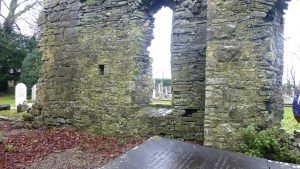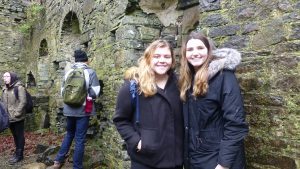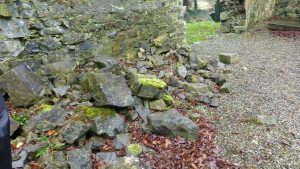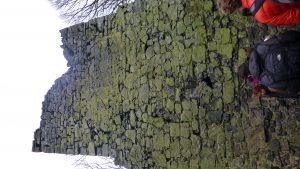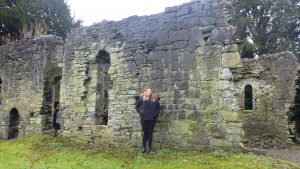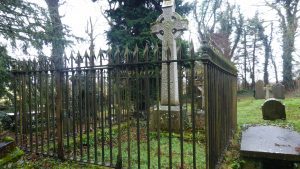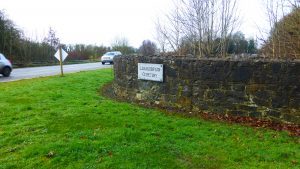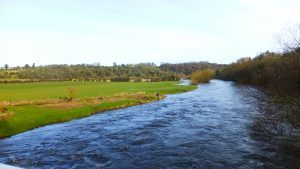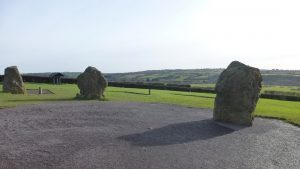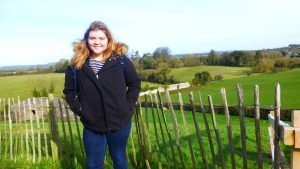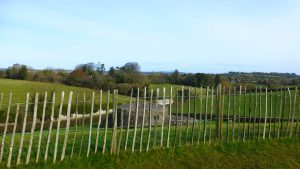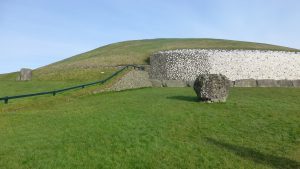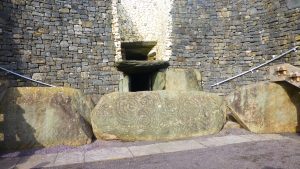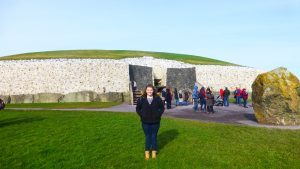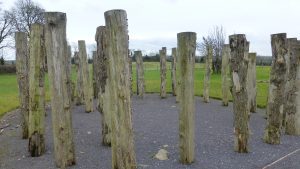One can never imagine the wonders found in the nooks and crannies of ancient sites. Recently, I had the pleasure of visiting four magnificent cultural sites with my Irish Heritage class. As an anthropology major, I have had a passion for learning about different cultures. I would often imagine what it would be like to have lived in Victorian London, in the ancient Maya civilization of Copan, or even the grandiose Roman Empire. However, I never really gave much thought to the Irish civilizations and how they lived in their everyday lives. Now, it is all I can think about as I stroll next to ancient castles that have had visits of most major English monarchs, burial sites that date back to the Neolithic period, and churches where popes have given homily. Here is a list of the sites I have visited, what I have learned about Irish culture, and my favourite aspect of each site. Oh, and a bunch of pictures of course.
1) Laraghbryan
Laraghbryan cemetery is a 13th century burial ground that was constructed for the most famous and rich family in Country Kildare (think of a County as a state in USA): the Fitzgeralds. This cemetery holds hundreds of the descendants of this family, and with it, their shared story. Adjacent to the cemetery is Laraghbryan church, which has its own magic and architectural fascination. At first glance, the church looks like it was made by the same architect around the same time. However, it turns out that the church was created in two separate intervals of time, according to the town’s and the Fitzgerald’s needs. The tower (or rather the remains) that you can see in the picture were not part of the original plan. In the 14th century, this little church and the priests inside were under attack, so they had to find a way to protect themselves. Hence, they made that tower with extremely narrow windows in order to shoot arrows out of it and protect the church.
Now, history aside, the view of the remnants of Laraghbryan church are truly incredible. To some people, they might look like mere debris, but, in reality, those remains have the capacity to help us recreate the everyday life of a priest in the 13th century. The grass (which is truly as green as you would expect Irish grass to be), paired with the air of mystery, power, and knowledge that the church emanates is enough to leave everyone speechless. That, and the fact that my professor is such a wise tour guide made this experience unforgettable.
Fun Fact: did you know that during the 15th century, there was a tax in Ireland depending on how many windows your house had? Therefore, many old building have windows blocked out with bricks to prevent such high taxes, like Laraghbryan.
2) Newgrange
Oh dear. This is a big one. Newgrange is perhaps the most famous passage tomb in Ireland. It was erected around 3200 BC. Not a lot of concrete information is known about Newgrange, but it is believed to have been a burial site for a very important family (maybe a leader) with several smaller burial sites attached to it. More importantly, Newgrange is believed to have been used as a meeting ground for people to connect with the Underworld, also known as the Side (look I am even learning some Irish words!).
Newgrange is such an interesting site to look at given its architecture. It is a complete circle, like most passage tombs are, but it still has all the original stones that were used to build its wall. The rocks have clearly been polished through the years in order to preserve them, but they are still the real ones. Imagine, those rocks have been there for more than 5,000 years! More than that, Newgrange was built in a way that the sunlight will reach the inside of the passageway only during the summer solstice. However, from the inside of the tomb you cannot see to the outside. I was not allowed to take any pictures on the inside, but it was truly mesmerizing to think how much knowledge this group had in order to make the calculations necessary for such a precise construction. Finally, Newgrange is at the perfect location to witness a glimpse of the Irish landscape. Standing next to the passage tomb, one can imagine the life of an Irish native who called the green land, the lush vegetation, and the rivers that peek in and out of the trees, home.
Fun Fact: The visitor’s centre at Newgrange has THE BEST scones I have tried in Ireland. Definitely worth the trip (Everything I mean, not only the scones).
3) Knowth and Dowth
And finally the twins. Knowth and Dowth are lesser known passage tombs twenty minutes away from Newgrange. In fact, these two sites are not open to the public. But, professor Grogan has a few connections (more like his own private key because he excavated Howth and Dowth for ten years), and we were able to go in and have the place all to ourselves. We were even allowed to go into the tombs, which we learned were later used as houses. Our class also got to climb on top of the passage tomb in order to have a 360 view of the landscape. Knowth and Dowth have even more history behind them than Newgrange, but because they do not look as magnificent as the former, they have been relegated to another plane. That is a quite sad fact, given the immense beauty and the stories they hide. Nevertheless, I am lucky to say I visited sites that not even the natives know that well.
Fun fact: Did you know that Ireland is very open to letting people go inside national monuments and prehistoric sites? I was in a chamber were people lived, loved, and worshipped more than 5000 years ago, and the Irish government was super cool about it. Gotta love the Irish.
At first, most of these sites look like awesome screen savers for your phone or really cute landscapes for your Instagram pics. But, the fact is that these sites hold so much mystery, knowledge, beauty, and above all, the intrinsic culture of those who knew Ireland before anyone else did. As much as I enjoyed taking pictures (which are right down here, I promise. Just keep scrolling), my heart was taken by the history behind such wonders. It is not about the places, but what those places can tell you about the fundamental essence of humanity.

